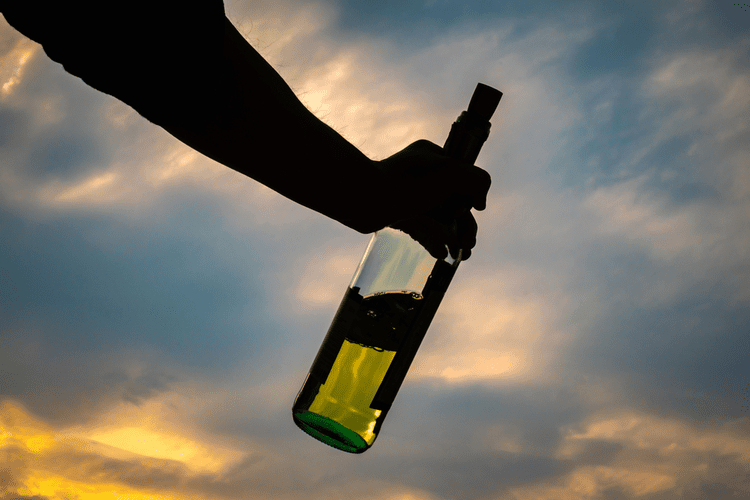If you use marijuana at least once a week, you might need more anesthesia. Using pot heavily, especially in your teen years, may leave more permanent effects. Imaging tests found that some adolescents who used marijuana had fewer connections in parts of the brain linked to alertness, learning, and memory. Studies also note that if you’re at risk of a mental condition, you may be more likely to smoke marijuana at an earlier age, maybe as a way to medicate yourself. Psychosis is a symptom of a serious medical condition called schizophrenia.
Alcohol addiction primarily affects the GABA and glutamate neurotransmitter systems, leading to significant alterations in mood, motivation, and self-control. This results in severe withdrawal symptoms, including seizures and delirium tremens, which are life-threatening. The DSM-5 outlines specific criteria for diagnosing CUD, requiring at least two of eleven criteria to be met within 12 months.

What Are the Roles of Marijuana in Addiction Treatment and Recovery?
To prevent marijuana addiction, individuals and communities should focus on increasing awareness of its potential risks, building a supportive environment, and adopting healthier coping mechanisms for stress. Intensive Outpatient Programs (IOP) provide structured treatment for individuals who require consistent care but do not need 24/7 supervision. These programs include therapy sessions, group counseling, and educational workshops that aim to address the underlying causes of marijuana addiction while teaching coping strategies and relapse prevention.
Family history of addiction

According to a study from the Massachusetts General Hospital, medical marijuana can lead to cannabis use disorder.9 The highest risk came from the people who use medical marijuana to relieve anxiety and depression. Behavioral therapies, such as cognitive behavioral therapy (CBT) or motivational enhancement therapy, are often included in treatment plans for cannabis use disorder. They’re highly effective at increasing self-control, identifying problematic behavioral patterns and relapse triggers, and developing strategies to overcome marijuana misuse. Some studies have found that people often engage in cannabis use to lessen their feelings of anxiety or depression, and that self-medicating in this way can often lead to drug dependence. Other mental health considerations have been noted in people with cannabis dependence as well.
More on Substance Abuse and Addiction
For individuals recovering from substance use disorders, marijuana use triggers cravings for other substances, making it difficult to maintain abstinence from drugs like alcohol, opioids, or stimulants. Marijuana addiction treatment may include behavioral therapies, marijuana addiction support groups, and, in some cases, medications to manage withdrawal symptoms. Individuals with pre-existing mental health conditions may be at a higher risk of developing an addiction to marijuana. This can be due to several factors, such as using marijuana to self-medicate or having a predisposition to addiction based on genetic or environmental factors. Mental addiction, also known as psychological addiction, is the emotional or cognitive dependence on a substance or behavior. It typically involves cravings, obsessing over the substance or activity, and continued use despite negative consequences.
South Carolina Addiction
When the chemical is removed (i.e., someone stops smoking), thebody experiences withdrawal. Marijuana is one of the most popular drugs available due to easy accessibility and the various ingestion methods. While marijuana may not be as life-threatening as heroin or cocaine is, developing a marijuana addiction is possible and can have immensely adverse effects on the body and brain. However, if the use is becoming a need or you’re experiencing negative consequences because of it, it may be a problem.
What are the signs of Cannabis Use Disorder?
While not as physically addictive as substances like opioids, long-term use leads to dependency. Withdrawal symptoms include irritability, sleep disturbances, and cravings. According to research by Connor JP, Stjepanović D, Le Foll B, Hoch E, Budney AJ, Hall WD. Et al. 2021, titled “Cannabis use and cannabis use disorder,” about 9% of users develop cannabis use disorder, with the risk increasing among frequent users and those who start at a young age. https://www.tama-hotel.com/the-cycle-of-alcohol-addiction-national-institute-7/ Early exposure to marijuana, combined with a family history of substance use disorders, raises dependency risk by over 30%.
There is a common misconception that misusing cannabis has nonegative physical effectslike smoking cigarettes has. There are a handful of risks that someone addicted to marijuana will face compared to the average cigarette smoker. While it isn’t as frequent as other types of drug addictions, this does not mean that the risks are not as dangerous.
Cannabis is one of the most popular recreational drugs in the United States. There’s evidence that it was used in Central Asia and Western China to treat health issues such as arthritis, asthma, pain, how is marijuana addictive and depression. It’s important that your doctor knows about cannabis and any other drug you use. It will become part of your medical record, but that’s private information. Talk to your doctor if you have questions about how to stop using marijuana or your symptoms. Despite its widespread use, many more studies are needed to understand how regular marijuana use may affect your brain and body.
Inpatient Treatment
This means you can’t stop using it even if it harms your relationships, school, job, health, or finances. The CDC states that you have a 10% risk of a cannabis use disorder if you use marijuana. Smoking and vaping tobacco can cause bacteria to grow underneath your gums, which can lead to this condition. Periodontal disease doesn’t just cause tooth loss but has also been linked to many other health issues, including heart disease alcohol rehab and preterm labor. These substances can all react with receptors in your brain that control body functions such as hunger, feelings of pain, and mood.
Factors Contributing to Addiction
Marijuana Anonymous is one such support group based on the principles of Alcoholics Anonymous. Addiction refers to the compulsive use of substances driven by strong physical and psychological urges. When someone you love is abusing marijuana or addicted to it, there are often signs and symptoms to look for. Knowing what these are can help you approach your loved one in a caring way.
- Marijuana is addictive, with users developing a dependence due to its effects on the brain’s reward system, leading to cravings and withdrawal symptoms when usage stops.
- According to the 2023 National Survey on Drug Use and Health, 21.8% of people 12 years or older used cannabis in 2023, with the highest percentage of use among young adults ages 18 to 25 years.
- Many studies have been done on the effects of marijuana abuse during pregnancy, and results are conflicting, possibly because of other substances used and/or abused during pregnancy, including tobacco.
- While some people believe marijuana is harmless, it has short-term and long-term effects that can impact both physical and mental health.
Additionally, marijuana interferes with emotional regulation and coping skills developed during recovery, thus hindering progress. Marijuana triggers mental health conditions by altering brain chemistry, particularly through the interaction of THC with neurotransmitters like dopamine, which exacerbate underlying vulnerabilities. Sleep disturbances, including insomnia or vivid dreams, occur because THC influences the brain’s production of melatonin, which is vital for regulating sleep cycles. As the brain adjusts to the absence of THC, users experience intense cravings due to the reward system’s dependence on the substance to release dopamine, the “feel-good” neurotransmitter. Marijuana is abused by heavy use, where individuals consume large amounts regularly and combine marijuana with other substances, such as alcohol or tobacco, to enhance the effects.
